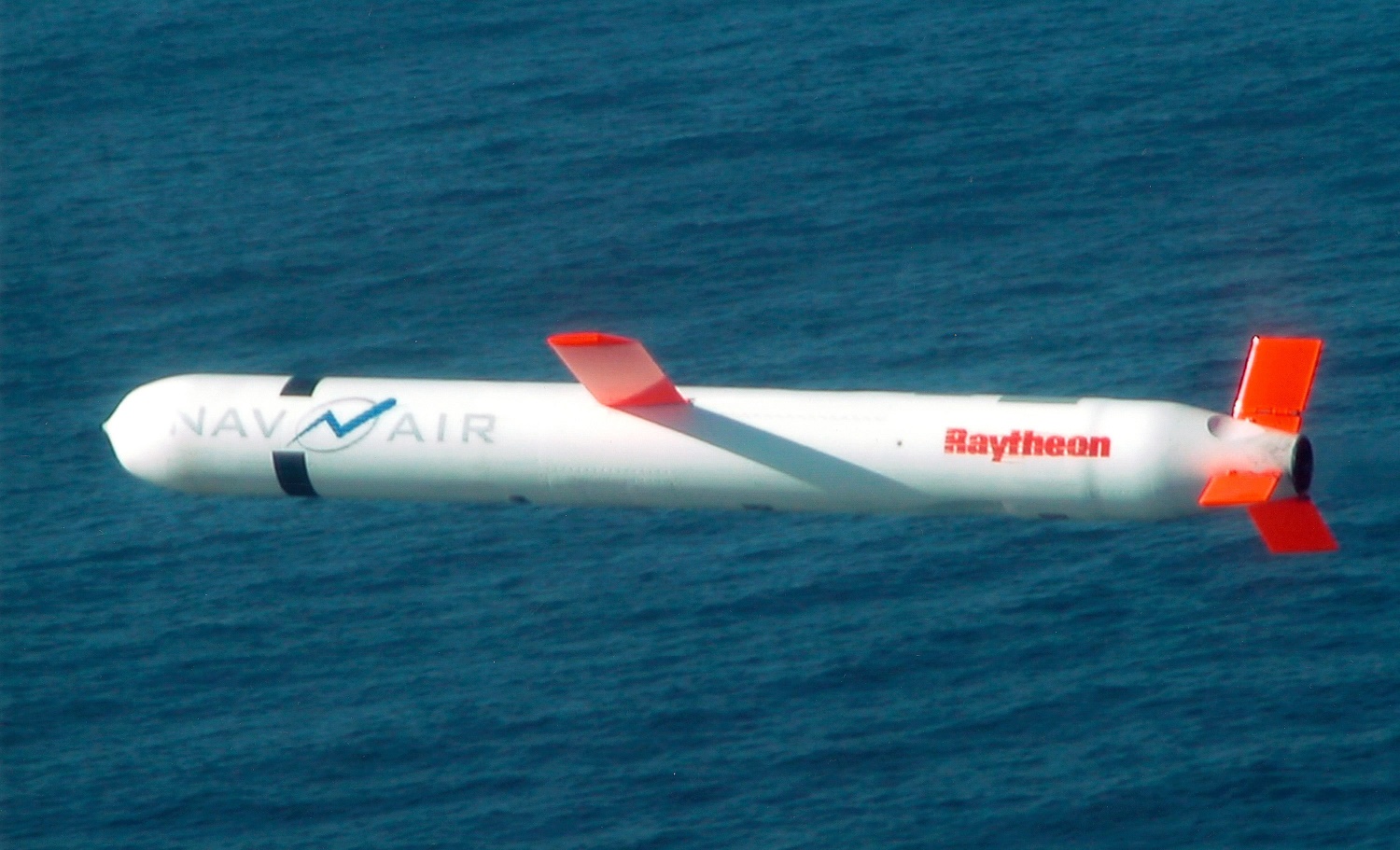The U.S. State Department has made a determination approving a possible Foreign Military Sale to the Government of Japan of Tomahawk Weapon System and related equipment for an estimated cost of $2.35 billion. The Government of Japan has requested to buy up to two hundred (200) Tomahawk Block IV All Up Rounds (AURs) (RGM-109E); up to two hundred (200) Tomahawk Block V AURs (RGM-109E); and fourteen (14) Tactical Tomahawk Weapon Control Systems (TTWCS). Also included is support for the Tomahawk Weapon System (TWS) (the All Up Round, the Tactical Tomahawk Weapon Control Systems (TTWCS) and the Mission Distribution Software Suite Centers (MDSSC)), as well as containers; feasibility studies; software; hardware; and other related elements of logistics and program support. The principal contractor will be Raytheon, Tucson, AZ.
The Tomahawk Land Attack Missile (TLAM) is a long-range, all-weather, jet-powered, subsonic cruise missile that is primarily used by the United States Navy and Royal Navy in ship and submarine-based land-attack operations. Under contract from the U.S. Navy, the Tomahawk was designed at the APL/JHU in a project led by James H. Walker near Laurel, Maryland, and was first manufactured by General Dynamics in the 1970s. It was intended to fill the role of a medium- to long-range, low-altitude missile that could be launched from a naval surface warfare platform, and featured a modular design accommodating a wide variety of warhead, guidance, and range capabilities. At least six variants and multiple upgraded versions of the TLAM have been added since the original design was introduced, including air-, sub-, and ground-launched variants with conventional and nuclear armaments.

Since its creation, numerous variants of the Tomahawk have been produced. The Block I versions included the Tomahawk Land Attack Missile-Nuclear (TLAM-N, TLAM-A, RGM/UGM-109A) and the Tomahawk Anti-Ship Missile (TASM, RGM/UGM-109B). Block II variants include the TLAM-C (RGM/UGM-109C), designed to attack hardened targets, and the TLAM-D (RGM/UGM-109D) designed to attack ‘soft’ targets such as aircraft and troop concentrations. Block III updates included new electronics allowing for coordinated attacks. Block IV missiles, the most modern version, are capable of loitering in flight for hours and possess a two-way datalink designed for receiving updated mission information of course corrections.
The Block IV TLAM-E is the newest upgrade to the Tomahawk series. The missile can be rerouted in-flight to either preplanned or new targets. Furthermore, the missile has a faster launch timeline and a loiter capability that, along with its electro-optic sensor, allows it to provide real-time damage assessment of previous strikes. The Block IV TLAM-E has a range of 900 nautical miles or 1,600 km. it carries a 1,000 lb. unitary warhead.16 The Block IV is the only Tomahawk variant that is still manufactured. Remaining Tomahawk missiles of other variations will be converted to the Block IV capability. The Block IVs can be given a new target in flight and can transmit an image, via satcom, immediately before impact to help determine whether the missile is on target and the likely damage from the attack. This targeting flexibility includes the capability to loiter over the battlefield awaiting a more critical target. Firing platforms now have the capability to plan and execute GPS-only missions.













